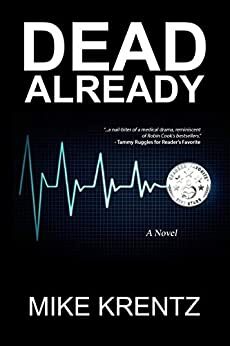
When I showed up in the ER many years ago for my first shift as an emergency physician, I didn’t consider myself a pioneer.
The American Board of Medical Specialties had not yet recognized emergency medicine as a bona fide clinical discipline. In those days, physicians often referred to the ER as “The Pit.” To maintain medical staff privileges, doctors had to take their turns in The Pit—whether they had any knowledge or recent experience in handling medical emergencies. Hospitals assumed that anyone who graduated from medical school had that knowledge. Wrong.
Consider a patient suffering a sudden heart attack brought to an ER staffed by a psychiatrist ten years out of medical school.
“How do you feel about your chest pain?”
No offense to psychiatrists. I respect psychiatry and those who practice it. They save lives. They heal broken minds. When you suffer a heart attack, a stroke, a serious injury, or life-threatening hemorrhage, you want a doctor who treats those conditions every day.
The patient-centered specialty of emergency medicine began when a cadre of dedicated physicians chose to practice full time in the ER. They suffered belittlement and insults from their traditional colleagues. Patients misunderstood their career choice.
“What are you going to do when you finish, Doctor?”
“Finish what?”
“Your training.”
“I am finished. This is what I do.”
Patients’ surprised reactions to that declaration reflected a common belief that doctors who staffed emergency rooms couldn’t make it in private practice. Not so. I chose emergency medicine to help people in times of dire need, distress, or worry; and to gain knowledge and expertise that crossed a range of medical specialties, not just one.
 The perseverance of the early emergency medicine pioneers developed a new broad-based body of knowledge, residency training programs, and a board certification process. These innovations resulted in a respected medical specialty that now draws from among the best and brightest medical school graduates.
The perseverance of the early emergency medicine pioneers developed a new broad-based body of knowledge, residency training programs, and a board certification process. These innovations resulted in a respected medical specialty that now draws from among the best and brightest medical school graduates.
When I resigned from a residency in neurosurgery and climbed aboard the emergency medicine train, the future of the specialty was still a distant vision. “Worth a shot.”
I never looked back.
My medical thriller, DEAD ALREADY, transports the reader into the complex, stressful environment of a modern-day emergency department; where life battles death amid terrified screams, plaintive whimpers, and shouted orders; where fallible humans strive to postpone death, restore life, or eliminate misery. Our would-be emergency medicine heroes sometimes fail, as all humans do. They may not have time or space to grieve. They suck it up and move on to quiet a frightened child, relieve pain, straighten a broken limb, repair a laceration, or reassure the worried well. All the while, no matter what challenge arrives during their shifts, they put aside personal issues, their own life crises, loves, and losses. The patient in front of them deserves full attention and commitment.
What unseen evil might lurk amid such chaos?
One person who comments will win a $25 Barnes & Noble gift card.









